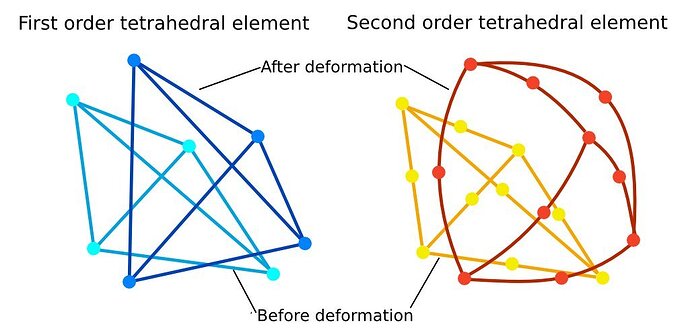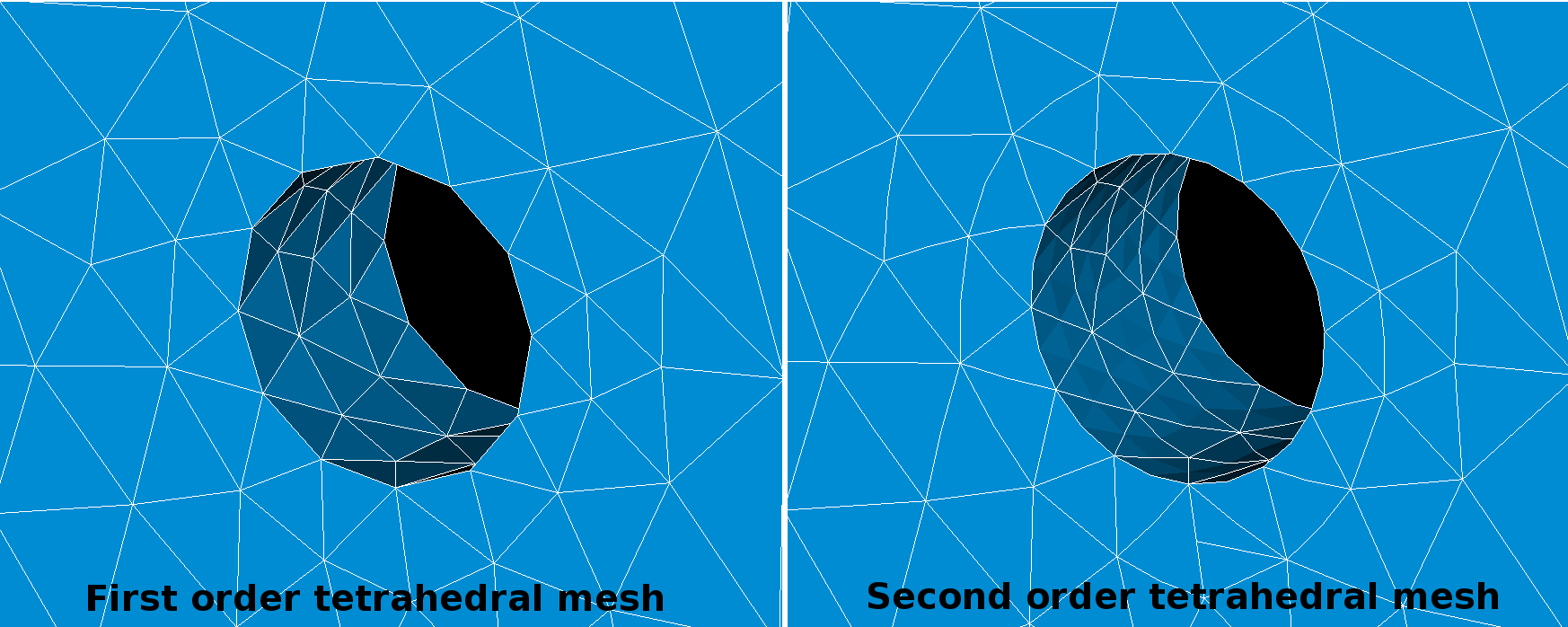Most often users need to get the results of their structural mechanics simulations near to experimental data. But in practice it is always hard to get the results from simulations which closely matches the experimental results. We all know that the geometry is first discretized in to smaller elements made from faces which in turn are formed from edges and nodes before we use it to perform finite element analysis. Therefore, a good mesh plays a vital role in getting reasonable results.
SimScale provides two types of tetrahedralization meshes; first order and second order mesh. Difference between the element formation of two meshes is shown in the figure below.
As can be seen, second order element consist of additional mid nodes due to which the deformation can be captured more accurately. Therefore, using them most of the time will lead to better results with even less number of nodes compared to first order mesh. Easy and accurate deformation of second order elements also proves their less stiff nature. Moreover, due to availability of additional mid nodes, SimScale meshing algorithm adjusts these nodes along edges to capture sharp curves more properly. An example of two created meshes is shown below. Note the captured circular cutout.
Summing up the above discussion, it’s always recommended to perform the analysis with second order mesh in order to get better results and deformation near to reality. Most importantly when doing a nonlinear analysis with or without material nonlinearlity i.e. elastoplastic or hyperelastic material. On the other hand, drawback of using second order mesh is that it needs more computation power and time.
Three of the simulation examples where the importance of the second order mesh is highlighted can be seen below:
‘L Bracket’ by @BenLewis
[!!!THIS LINK IS NO LONGER AVAILABLE!!!]

